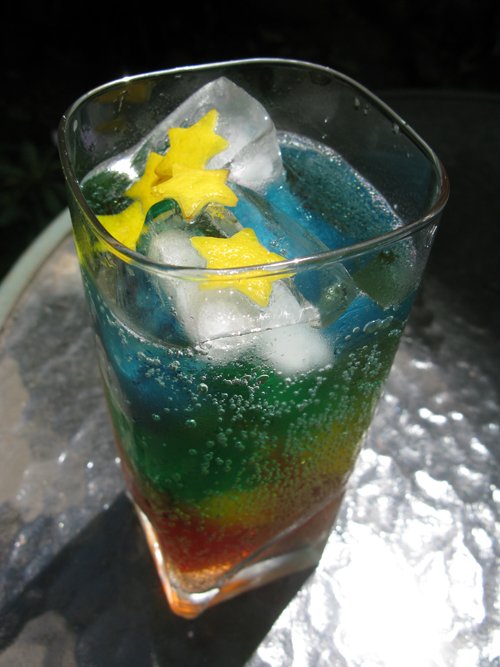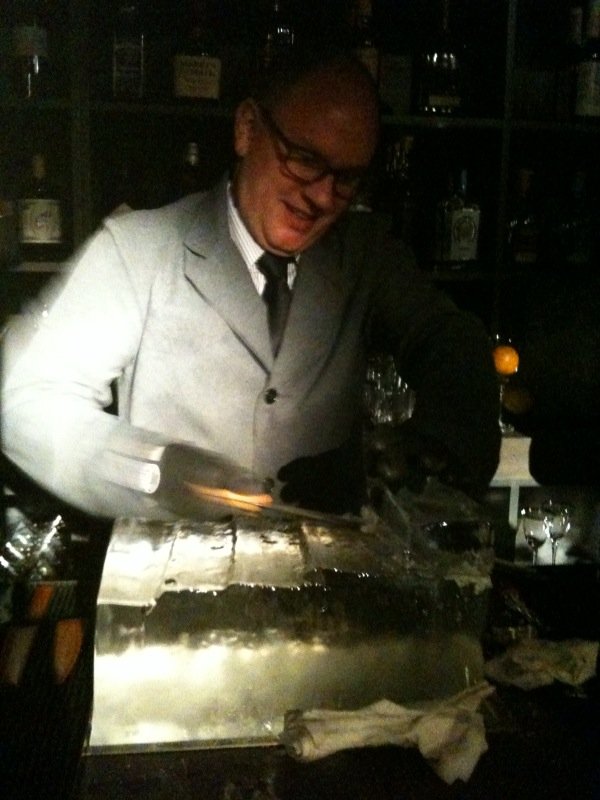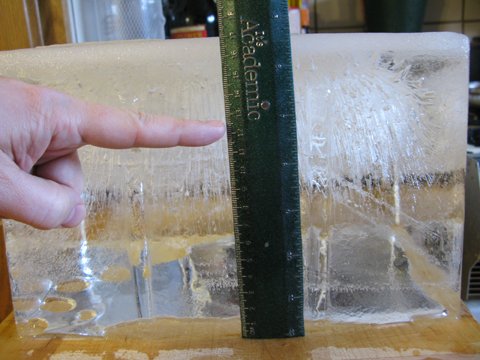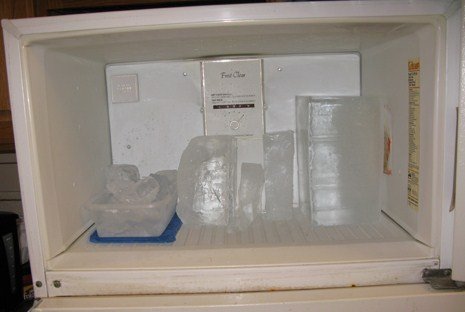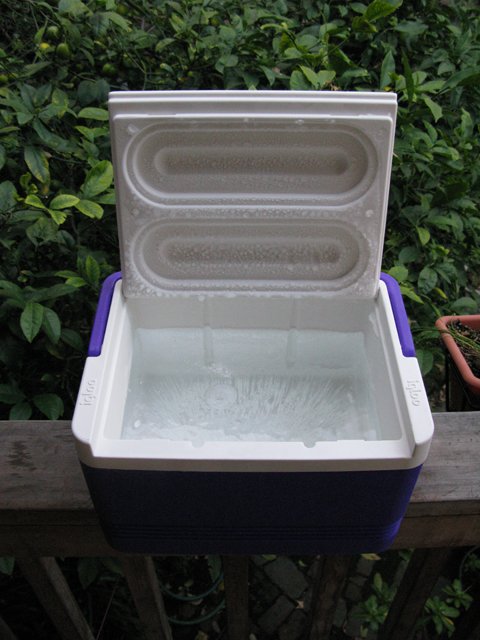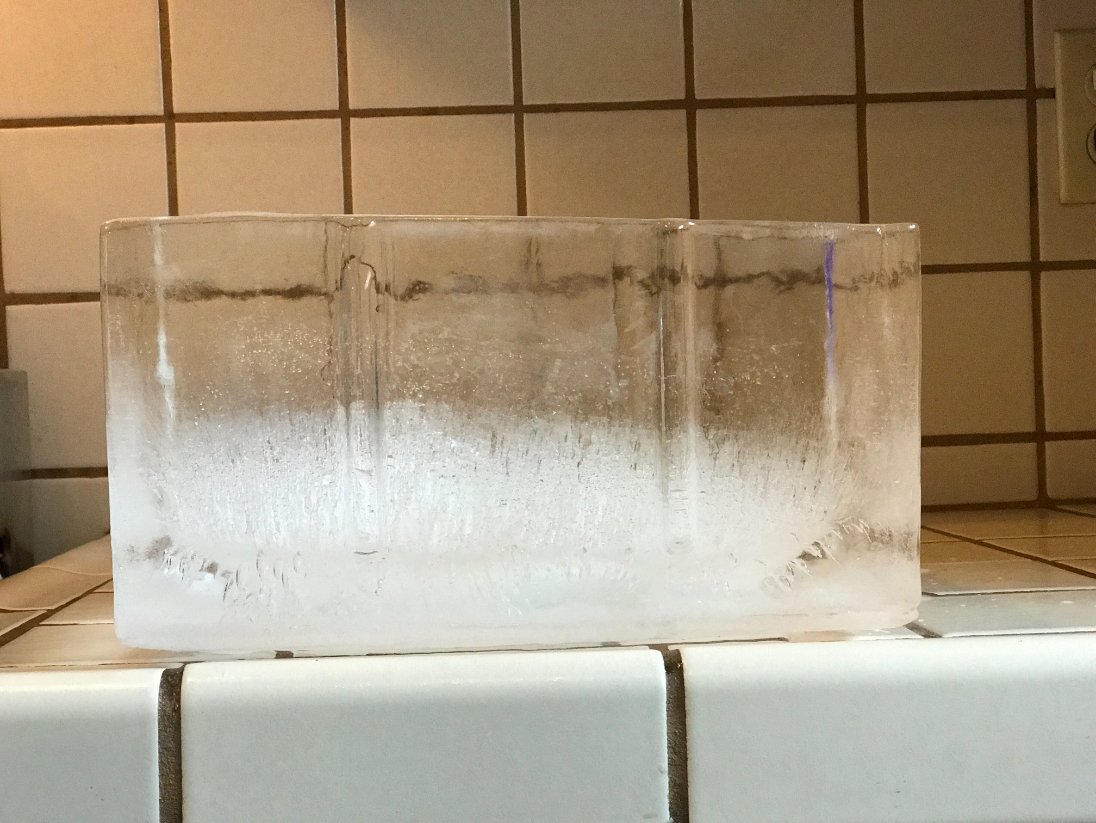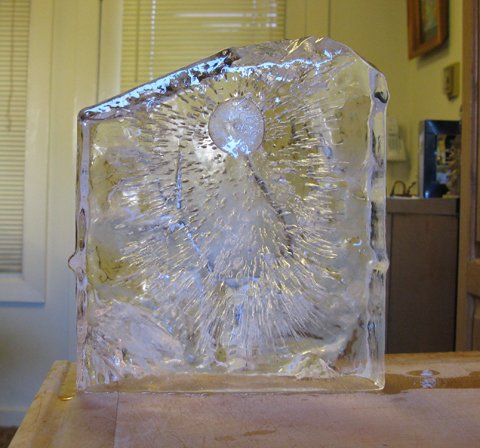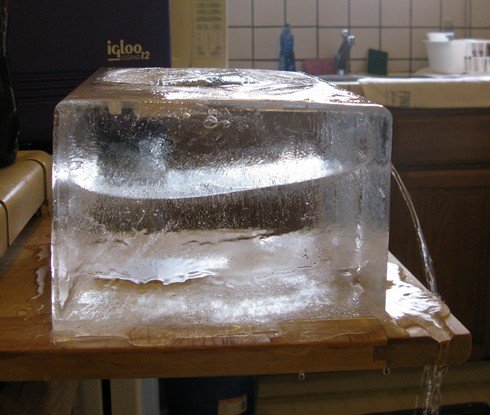I'm somewhere along the process of creating an ice cube tray that takes advantage of the top frozen ice that I make in an Igloo cooler. As the cooler lid is off when I freeze water in it, the water freezes from the top down like a pond in winter. The cloudy part of the ice (where air an impurities migrate as the water freezes) are only in the bottom of the block.
In the below picture the block has been turned upside-down after removing it from the cooler.
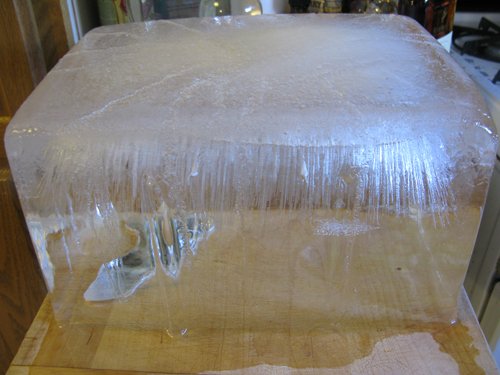
Most of the time when making ice for myself at home, I leave the cooler in my freezer for a couple of days then dump out the ice before the bottom portion starts to freeze and get cloudy- that way the entire block of ice is clear and I don't have to cut any of it off.
In a recent set of experiments, I wanted to see what percent of the block of ice was cloudy if I let the block freeze entirely. So far I've done three measurements.
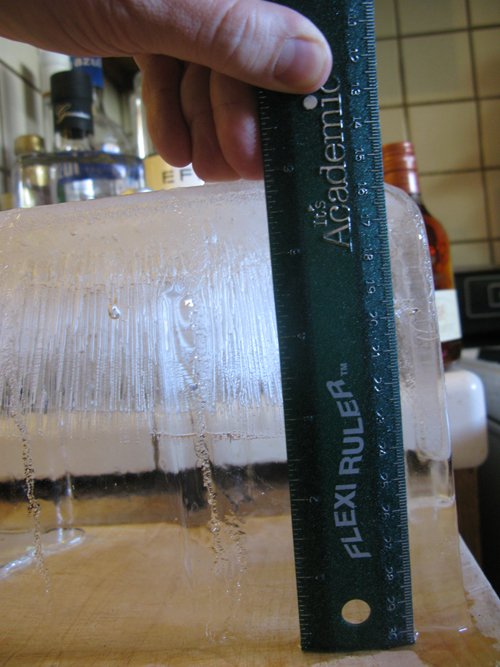
As you can sorta see, a portion of the ice has bubbly streaks in it but is mostly clear, then there is an all-cloudy last bit.
Trial One:
Total height = 3.75 inches
Somewhat cloudy = last two inches
Very cloudy, unusable = last 1/2 inch
Percent unusable cloudiness = 13%
Trial Two:
Total height = 6 inches
Somewhat cloudy = last three inches
Very cloudy, unusable = last 1 inch
Percent unusable cloudiness = 17%
Trial One:
Total height = 6 inches
Somewhat cloudy = last two inches
Very cloudy, unusable = last 1 1/2 inch
Percent unusable cloudiness = 25%
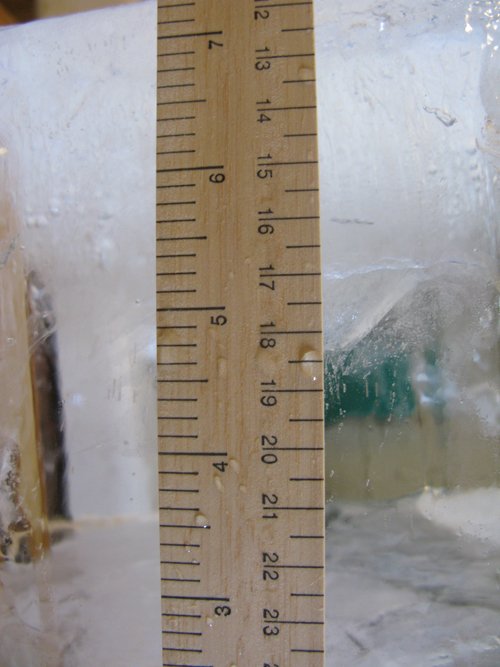
So we're looking at an average of 18% of the ice is too cloudy to use in a cooler of this shape and size.
Why might this information matter? If I develop an ice cube tray that fit into this cooler I would want to be able to remove the last cloudy bit so that it wouldn't get into the ice. I wanted to know about how much waste we're looking at.
But one thing I'm learning with repeated experiments is that by freezing from the top down the water expands and puts a lot of pressure on the bottom of the cooler. (Think of how a plastic bottle will bulge when put in the freezer.) With repeated experiments that cooler is starting to warp on the bottom, plumping out in the center. A better freezing vessel would be flexible on the bottom.
To see all of my ice experiments use this link.

